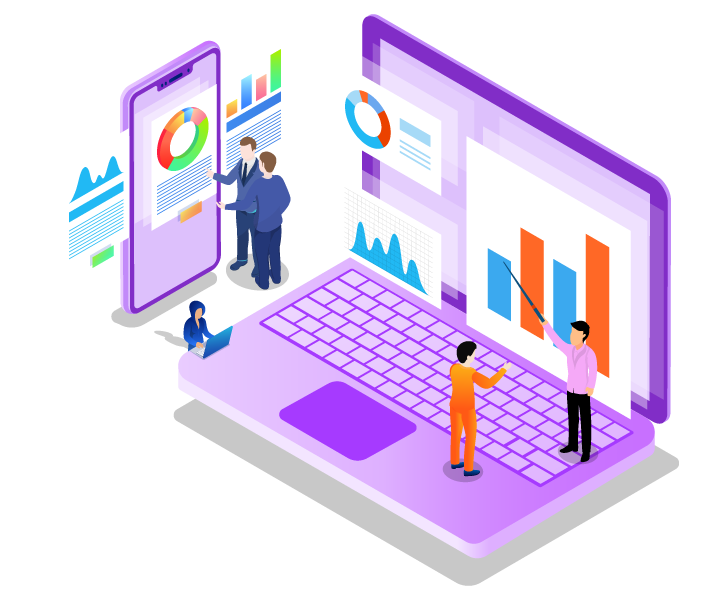In today’s rapidly evolving workplace, how we manage and maintain our devices has undergone major change. The traditional method of distributing laptops within the office has become obsolete in the modern workplace, since we have changed to hybrid and remote work arrangements. Instead an even more complicated process called Device Lifecycle Management was introduced. Managed Desktop Service has emerged as a major component in this change, assisting businesses simplify their processes and improve the experience of their users, eventually leading to better productivity.
Device Lifecycle Management (DLM), also known as DLM, is the process that manages a device’s lifespan from its acquisition until it’s decommissioned. It consists of a range of procedures that cover procurement as well as provisioning, maintenance and disposal at the end of its life. DLM in the traditional office was a simple procedure. The modern work environment that is remote is a new layer of challenges and layers.

IT managers have to now handle the management and logistics of assets at all stages of the lifecycle of a device. The need to address the needs of hybrid and remote workers is driving this transformation. Managed Desktop Service, a revolutionary new technology that has revolutionized the field, has been a major game changer for numerous organizations.
Managed desktop service: A remote work enabler
Managed Desktop Service (or MDS) is a extensive software application designed to facilitate the management of the devices of users. The service provides a complete approach to device provisioning, maintenance and support, making it a vital asset for IT administrators. Here’s how Managed Desktop Service is helping organizations navigate the challenges of remote work:
Improved End-User Experiential: A principal goal of Managed Desktop Service, is to improve the end-user’s experience. It addresses the issues that remote workers experience, including delayed equipment onboarding and software updates. MDS increases job satisfaction and productivity by ensuring employees are able to access the resources and tools they need at the time they are required.
Managed Desktop Service streamlines the delivery of new computers to remote employees. MDS can help organizations provide laptops and necessary equipment for new hires. This ensures that they are equipped with the tools needed on their first day. This eliminates the frustration of employees waiting for equipment and slowing down the process of getting started.
Fast Software Updates: Managed Desktop Service helps IT teams manage patches and updates for software more efficiently. It is able to schedule updates at time periods that aren’t disruptive, making sure that employees do not suffer interruptions in the course of their work. This helps reduce the possibility of employees being interrupted during important meetings or video calls.
Rapid Repairs or Replacements: For remote workplaces it is crucial to fix or replace malfunctioning devices as soon as you can. Managed Desktop Service Providers often have solid support systems that ensure that employees get prompt help when they have issues with their devices. This can reduce downtime and lowers the likelihood that cybersecurity-related threats could arise from mobile devices belonging to individuals or that are unsecure during times of crisis.
Cost-Efficiency: Companies can cut expenses by outsourcing management of the devices to Managed Desktop Services providers. This method eliminates staff in-house from managing devices. It also lowers the risk that costly disruptions could occur due to obsolete equipment.
The impact of employee engagement on Turnover
Employee engagement and retention are directly influenced by a seamless and efficient lifecycle management of devices. Employees who are dissatisfied by difficulties with their device could become disengaged or look for alternative possibilities. Inefficient DLM has a significant effect on employee satisfaction.
However, companies that invest in Managed Desktop Service and an efficient Device Lifecycle Management strategy can make for a more pleasant and vibrant work environment. Employees who have access most effective tools, who suffer less disruption, and receive prompt assistance for any issue, are more likely to remain at their current workplace. This could reduce the turnover of employees and the associated costs of recruitment and training.
In reducing Cybersecurity Risks
In the age of remote work, security is an essential concern for companies. Employees could make use of personal devices, or even unprotected devices without proper device management. This poses an enormous risk to the data and network security of an organization.
Many managed desktop service providers use solid cybersecurity protocols. They are able to ensure that all devices are up to current with the most recent security patches and ensure that data is secure and encrypted. This proactive strategy helps businesses reduce risks and ensure secure remote working environments.
The conclusion of the article is:
It is impossible to understate the importance of Managed Desktop Service (MDS) and Device Lifecycle Management in the changing workplace. These services are essential for businesses that are trying to adapt to the needs of hybrid and remote work. By insisting on enhancing the end-user experience, streamlining the provisioning of devices, and enhancing cybersecurity, organizations can boost productivity, decrease turnover, and create a secure and a positive work environment the new age of work. It’s not only about keeping up to date and technology, but also about an efficient and competitive future.